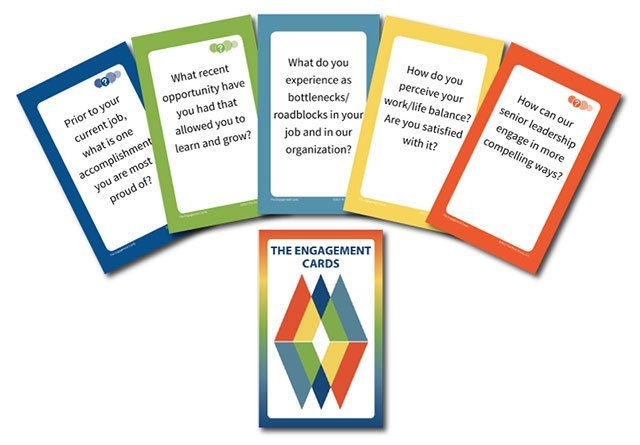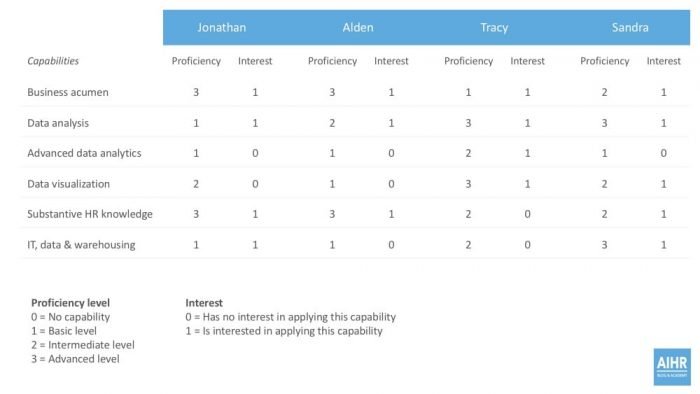
The ability to motivate people is a business skill necessary for leadership. Furthermore, understanding how to motivate others has many practical uses outside the workplace. I've spent years in high-level managerial and community leadership roles searching for the best ways to motivate other people. The six steps below are the results of my findings.
Here's how to motivate people in 6 proven steps:
People are motivated by different things. Some people are extroverts who like stark feedback while others are introverts who thrive off of positive reinforcement. When trying to motivate someone, make sure you understand their personality type and what drives them. If you don't, everything else will be for naught because you may be employing the right motivational strategy on the wrong person (or vice versa).
People's personality types will dictate the things that motivate them. To help understand a person's personality and their underlying motivational drivers, you can use any number of tools or principles. Some of the most common include personality tests like Meyers-Briggs. However, you can also use tools like Engagement Cards pioneered by Piras business consulting, which help you understand what's important to the person or people you're trying to motivate.
Two of the best tools for understanding a person's personality type include:

Using the tools above to better understand the people around you is the first step to motivating others. Use your understanding of personality types to tailor your motivational approach as you read the rest of this article.
Now that you understand the personality type of the person (or people) you're trying to motivate, the next step is to equip them with the skills needed to succeed. If you don't do this, people will quickly become demotivated when they realize they don't have the ability to achieve any sustained level of performance and success.
Ultimately, people become more motivated when their performance increases over time and results in increasingly higher levels of success. If you don't equip people with the skills needed to succeed right off the bat, it's like trying to build a house on a cracked foundation. You might be doing all the right things to motivate someone, but if they don't have the skill set necessary for quality output and performance, they'll quickly become demotivated and ultimately it'll be your fault, not theirs.
To equip the people you're trying to motivate with the skills needed to succeed, firmly identify the requirements of the job, task, project, or goal. For example, if you're trying to motivate a salesperson and you know they'll need to sell over the phone, train them on the best ways to engage a prospect, advance the conversation, and close the deal as well as how to get over rejection quickly.
The best way to do this is with a skills matrix, which clearly defines the requirements of the job or task at hand and where a person falls within those requirements, from "needs improvement" to "excellent". This way, you not only clearly define the skills necessary for success, but you can identify which skills you need to help the person you're trying to motivate improve upon. There is software out there to help but the easiest way is to create one using Excel or Google Sheets.

Remember that people typically want to do a good job. If they're working hard and not succeeding, it can quickly become demotivating. If you're trying to motivate other people, it's up to you to ensure that they have the foundational skills needed to succeed, otherwise they'll become demotivated when they realize their hard work isn't resulting in the progress they expect.
Now that you understand their personality type and have given them the baseline skills required to perform well at their job, task, or project, the next step is to set clear goals and expectations. If there isn't a common understanding of the end-goal and the expectations along the way, it's easy for people to become demotivated because they'll quickly feel directionless and lost.
It's much harder to achieve sustained motivation without something to shoot for. Conversely, when trying to motivate other people, it's much easier if there's a common goal that everyone understands and is pushing to achieve.
For example, when motivating others, try to define an annual "north star" for the organization, such as "launch a new product line". Then, translate that organizational-level north star goal into smaller, individual goals for the people you're motivating. If you work on the marketing team, perhaps you set a quarterly goal for your team around something like "come up with the go-to-market strategy for the new product by the end of Q2."
This gives people a firm direction to head in as well as a clear benchmark to measure their success against. Then, review these goals as often as monthly to ensure people are on track. This helps people understand the "why" behind their work as well as clarity on expectations, which is much more motivating than feeling directionless and like they're alone twisting in the wind.
After you've done the work of understanding a person's personality type, helping them cultivate the skills to succeed, and setting clear goals and expectations, the next step is to get out of their way. If you've done everything correctly, the people you're trying to motivate are ready to get to work and prove they have what it takes to achieve the things you've set out to accomplish.
Now, this doesn't mean that you shouldn't provide support and oversight. What this means is that you need to trust the people you're trying to motivate, which will further motivate them to take initiative. If you don't, you end up micromanaging them and squashing any motivational momentum they were building. Plus, micromanaging makes your job harder, too. Empower your people and by helping them it helps you.
The best way to do this is via a defined meeting cadence of check-ins. For example, if you set clear quarterly goals, you might want to have a Monday recurring meeting where you have the person you're trying to motivate walk you through the work they're doing for that week that'll get them closer to the quarterly goal you set. Then, perhaps you have one check-in on Wednesday to make sure things are on track then a meeting on Friday to wrap the week and set up work for the following week.
One of the best methodologies to help with this is the Scrum framework. While it's mainly used by software developers, many of the Agile principles can be adapted to manage any workflow. If you create a meeting cadence similar to the Scrum cadence, you ensure you're checking-in and providing consistent support but also give the people you're trying to motivate the autonomy to set and manage their own work.
Again, just because you're motivating people by giving them autonomy and agency over their work doesn't mean you can't or shouldn't provide consistent coaching and feedback. In fact, if you aren't giving clear feedback regarding how someone is performing or coaching them on how to improve it can quickly demotivate them because they don't know where they stand.
Specifically, feedback and coaching are used in the following ways:
Both feedback and coaching are important to a person's motivation. Both are required if you want someone to understand what they did and how they can improve in a way that's motivating rather than demotivating. To ensure what you're telling someone is motivating, make sure that both your feedback and coaching are very clear. "You did or didn't do this well" isn't enough. You need to tell them exactly what did or didn't go well and how they can specifically improve next time around.
When it's all said and done, motivation is all about rewards and incentives. These incentives can be either internal or external, and in many cases, they're both. For this reason, it's important to praise the person you're trying to motivate when they do good work, which will motivate them to continue that good work into the future.
If you don't congratulate someone for their accomplishments you run the risk of demotivating them, even if you've followed the previous steps exactly. This is because most people respond to positive reinforcement and even expect it when their performance improves over time. Often, a simple "great job" is all that's needed to motivate someone. Conversely, failure to do so can quickly demotivate someone.
Motivation at its basic level is all about rewards and incentives. If you're trying to motivate people to study, make sure that they reward structure is in place. Then, help create a system that breaks down larger material into smaller chunks and devise a study routine that leverages accountability partners.
Again, motivation is based on incentive. In this case, the incentive is to increase the well-being of others and thereby increasing your own positive feelings of self-worth. Remember that people are biologically wired to want to help others. This is because it's an evolutionary advantage to be part of a functioning tribe. This means that there is a biological reward system built in that's triggered when people help others. All you need to do is tap into it.
Incentives that motivate a person include things like achievement, advancement, recognition, increased responsibility, autonomy, personal growth, and love of the work itself. While you don't need all of these factors to motivate someone, at least one or more needs to be present otherwise people will become demotivated.
Gamifying business goals is a great way to motivate employees. Other ways to motivate employees is to give them autonomy over their work and allowing them to self-organize into teams and tackle complex problems together.
Motiving other people is slightly different than motivating yourself. To motivate others, make sure you understand who they are and what drives them. Then, give them the skills necessary to succeed, set clear goals, and let them take ownership of their work, giving them coaching and feedback along the way.